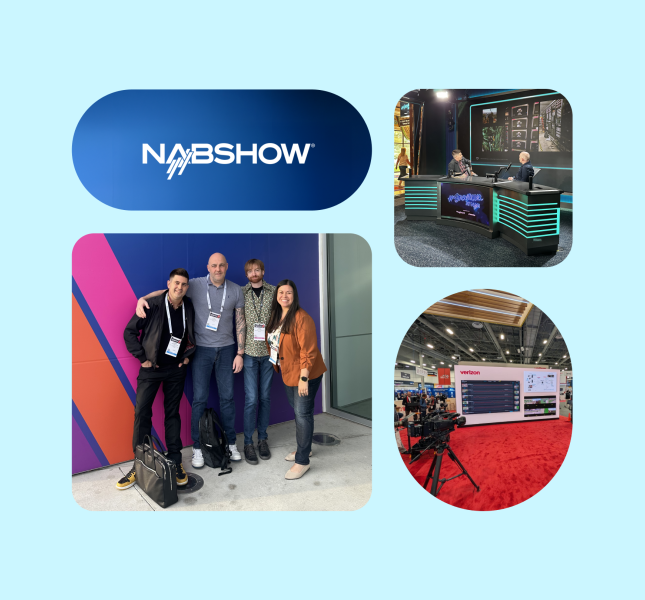Enhance Ecommerce with a Social Shopping Experience

Shoppers care a lot about what their friends have to say: 90% of consumers believe in brand recommendations from friends. With consumers increasingly turning to each other to make online purchasing decisions, brands should take advantage of the inherently social nature of shopping to expand their reach and enhance their campaigns.
This doesn’t mean pestering your shoppers to share a purchase to their social feeds or spam friends with personalized discount offers. Instead, businesses can build social interaction into their ecommerce platforms in ways that go beyond simply enlisting customers as sales reps. Brands that will truly lead in this space are those who provide innovative social shopping experiences that build off consumers already-existing shopping behaviors. Here are some takeaways for designing your own social shopping experience.
Bring Friends Together
An ideal shopping experience brings a group together by encouraging friends to seek one another out to participate. Doing so inspires the most enthusiastic member of a social circle to function like a brand ambassador, encouraging friends to engage. Build this into the delivery of your content, but don’t make customers feel like you’re using them just for reach.

Instead, provide a real value proposition demonstrating how more participants enhance the experience. One shopping platform that expertly recreates the fun of shopping together at a mall is the Tommy Hilfiger video look book for SideFlix. SideFlix is a new visual platform from Facebook that allows multiple users to lay their phones side-by-side as a video plays stretched across the devices’ screens in unison. By inviting viewers to connect through Facebook Messenger, the platform sets the stage for in-person interaction despite its digital nature. It treats viewers to content that features influencers wearing the latest Tommy Hilfiger looks straight off the runway.
Content unlocks depending on how many people are connected in a group, with a minimum of two devices required to view one video. As more people join, more perspectives become available in the video: one device might focus on one model, a second device on another model, while the last two devices might provide a sweeping view of the scene and atmosphere. While content is gated behind a headcount, having more devices connected enables a more visually engaging experience with to the added screen space. The more the merrier, indeed.
Build Upon Customer’s IRL Shopping Habits
The delivery of your social shopping experience should in some way connect with your industry or product. With a platform like Sideflix, pretty much any project with strong visual storytelling can succeed by enhancing a film. But for a truly shoppable experience, you may need to get a little craftier. Look for ways to enhance and build upon existing consumer habits: how do your customers engage socially with your industry already, and how can you translate that experience to a social platform?

Fashion is one industry that relies heavily on outside opinion: while you may gravitate toward your own sense of style while shopping for a new look, you’re likely to ask a friend what they think before you make a purchase. In addition to the social nature of clothes shopping, the industry thrives on consumer reaction with the unveiling of new collections and runway shows. The Tommy Hilfiger video look book builds upon both of these consumer reactions by encouraging friends to huddle around collection-focused videos together, sharing their opinions about the line while browsing specific looks before making a purchase.
“SideFlix disrupts the traditional online viewing experience by mixing digital and physical interactions,” said Yentl Bresseleers, Senior Producer at MediaMonks. “The technology enables the brand to get more creative with the execution by stitching together multiple perspectives into a cohesive whole, thereby creating a compelling multi-user experience on and offline.” The experience makes smart use of the platform; activated through Messenger and hosted as a Facebook Instant Game, it breaks the conventions of the platform to create something entirely new.
Elegantly Integrate Content and Point-of-Sale
When designing a creative experience that so closely aligns with the buying process, a big challenge is integrating that experience with the point of sale. It takes finesse to transition from content to purchase without being pushy or taking users out of the experience, but it’s not impossible. Striking the right balance requires trust and good communication across the organization and partners to align and maximize goals—for example, a content/marketing team versus IT versus the ecommerce platform.

The Tommy Hilfiger SideFlix campaign demonstrates one way to do this correctly. The process of browsing and selecting items is built directly into the content itself, allowing viewers to save looks to a wishlist. Afterward, the platform hands them over to the Tommy Hilfiger site to complete their purchase through a handy link. This allows for a shopping experience that’s cohesive and seamless for the user, yet allows each stakeholder to own their respective place along the customer journey.
Offering social interaction is a great way to enhance the digital shopping experience. In addition to making the customer journey more exciting, your business becomes more relateable by presenting an experience aligned with the platforms that customers use to connect with one another. Where will you open up shop next?
Related
Thinking
Sharpen your edge in a world that won't wait
Sign up to get email updates with actionable insights, cutting-edge research and proven strategies.
Monks needs the contact information you provide to us to contact you about our products and services. You may unsubscribe from these communications at any time. For information on how to unsubscribe, as well as our privacy practices and commitment to protecting your privacy, please review our Privacy Policy.



